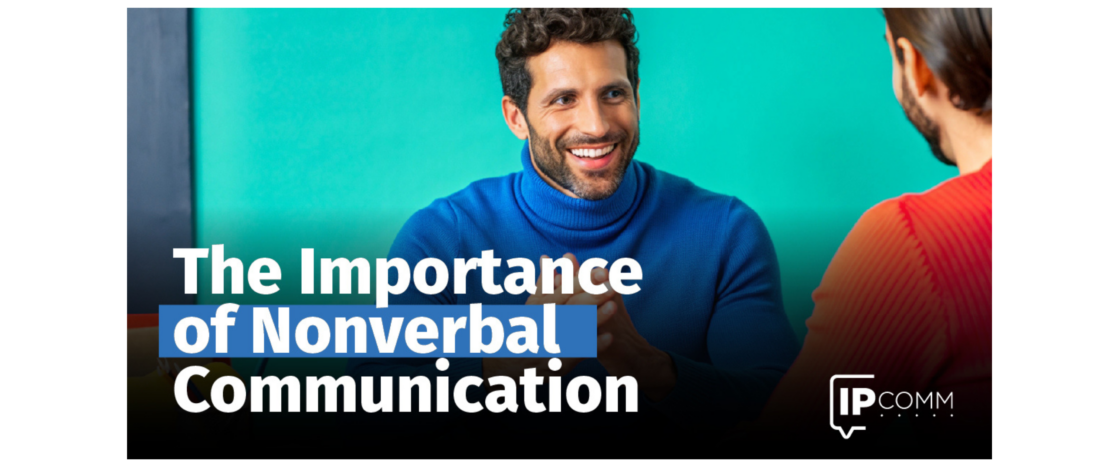The Importance of Nonverbal Communication
BLOG

Article
The Importance of Nonverbal Communication
We’ve all heard the saying, “Actions speak louder than words.” But have you ever stopped to truly consider how much louder? While we often focus intently on the words we choose, research suggests that a staggering 93% of our communication is nonverbal!
Think about that for a moment. Only a tiny 7% of the message we convey comes from the actual words we speak. The rest? It’s all in our body language, tone of voice, facial expressions, and even the space we occupy.
So, how much thought do you give to your nonverbal communication? Mastering this silent language can be the key to more effective communication, stronger relationships, and greater personal and professional success. Let’s delve deeper into some compelling statistics that underscore the importance of nonverbal cues:
Facial Expressions
Research indicates that there are at least six universally recognized facial expressions of emotion: happiness, sadness, anger, fear, surprise, and disgust. These expressions are often processed and understood subconsciously, influencing how we perceive someone’s feelings and intentions.
Eye Contact
Studies show that maintaining appropriate eye contact can signal attentiveness, confidence, and sincerity. Conversely, avoiding eye contact can be interpreted as shyness, dishonesty, or disinterest. The “right” amount varies across cultures, highlighting the importance of cultural awareness.
Body Language (Kinesics)
Posture, gestures, and movements convey a wealth of information. Open and relaxed posture often signals confidence and approachability, while crossed arms or legs can indicate defensiveness or discomfort. Fidgeting might suggest nervousness or impatience.
Tone of Voice (Paralanguage)
How we say something is often as important as what we say. Our tone, pitch, pace, and volume can convey emotions like excitement, boredom, or frustration, even when the words themselves are neutral.
Level Up Your Silent Language: Techniques for Powerful Nonverbal Communication 🎯
Ready to harness the power of your nonverbal communication? Here are some practical techniques to make your silent language more captivating and effective:
Self-Awareness is Key
Start by becoming more conscious of your own nonverbal cues. Observe yourself in a mirror, record yourself speaking, or ask trusted friends or colleagues for feedback. Pay attention to your posture, facial expressions, hand gestures, and tone of voice.
Practice Open and Confident Body Language
Stand tall with your shoulders back and chest open. Maintain a relaxed yet attentive posture. Use open gestures, like uncrossed arms and palms facing outward, to signal approachability and honesty.
Master the Art of Eye Contact
Aim for consistent but not aggressive eye contact. Hold someone’s gaze for a few seconds at a time to show engagement and sincerity. Remember to blink naturally and avoid staring.
Mirroring for Rapport
Subtly mirroring the body language of the person you’re communicating with can build rapport and create a sense of connection. However, avoid obvious mimicry, which can feel insincere.
Pay Attention to Your Tone of Voice
Practice speaking clearly and at an appropriate volume. Vary your pitch and pace to convey enthusiasm and maintain engagement. Be mindful of your tone to ensure it aligns with your verbal message.
Be Mindful of Facial Expressions
Ensure your facial expressions match your intended message. A genuine smile can convey warmth and friendliness, while a furrowed brow might signal confusion or concern. Practice expressing emotions authentically.
Context is Crucial
Remember that nonverbal cues are often interpreted within a specific context. What might be appropriate in one situation could be misinterpreted in another. Pay attention to the environment and the relationship dynamics.
Seek Feedback and Be Patient
Improving your nonverbal communication takes time and conscious effort. Don’t be afraid to ask for feedback and be patient with yourself as you develop greater awareness and control over your silent language.
The Takeaway
In a world saturated with verbal communication, the power of nonverbal cues often goes unnoticed. However, the statistics are clear: our body language, tone of voice, and other nonverbal signals play a monumental role in how we connect with and influence others. By becoming more aware of our own nonverbal communication and learning to interpret the cues of those around us, we can unlock a deeper level of understanding and build more meaningful and effective relationships. So, the next time you communicate, remember that your message extends far beyond your words – your body is speaking volumes. Are you listening?